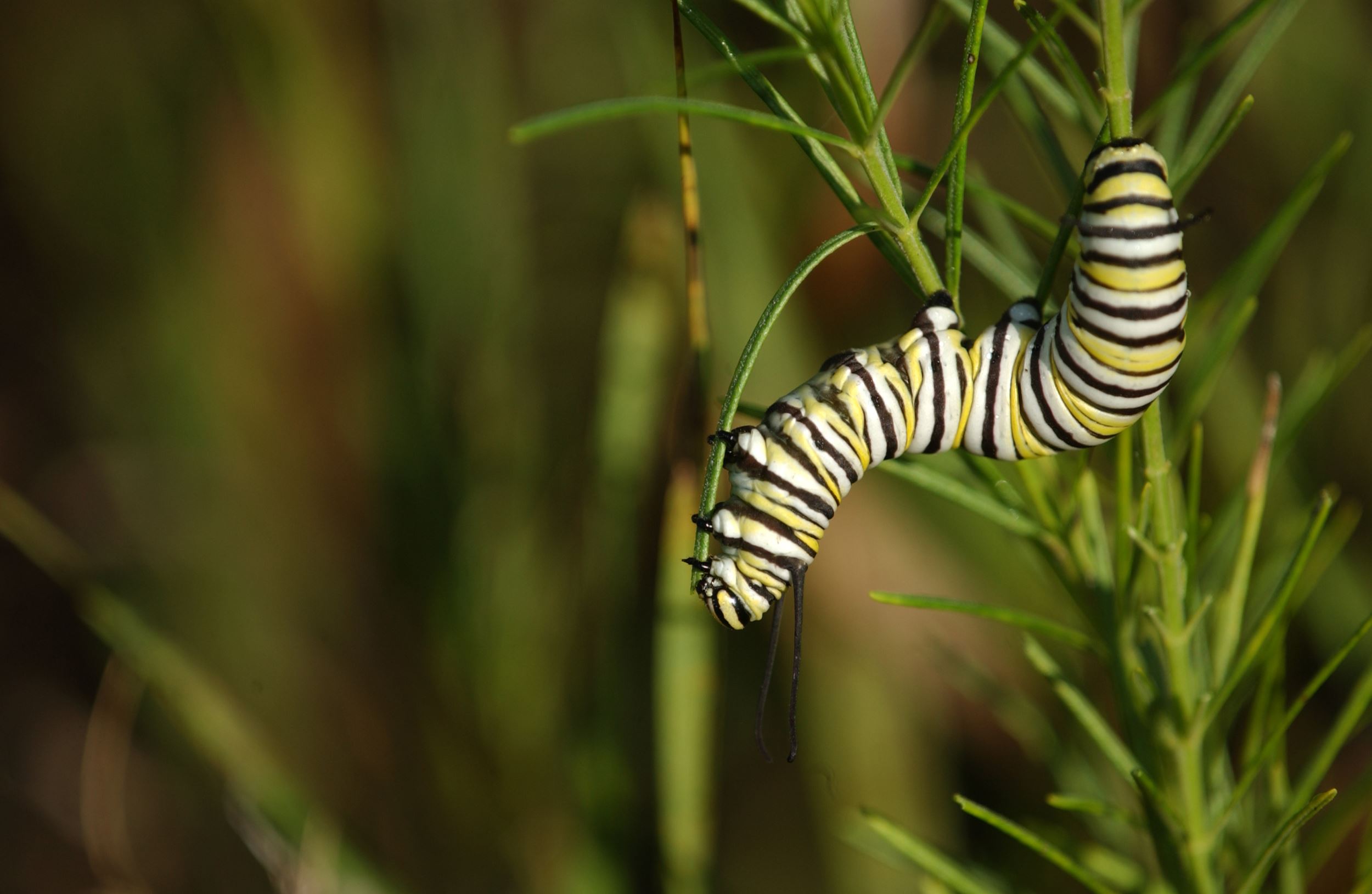The life of a butterfly
Posted on June 17, 2016 in Blog

Life Cycle
Butterflies' lives include four stages: egg, larvae, pupae, adult. The complete cycle may occur only once or several times per year, depending on the species.
As you look at adult butterflies, remember that other species may be living in the same place and time-but are less obvious in the other stages of their metamorphosis. In essence, butterfly species are "stacked" in the environment, enabling them to use several aspects of the habitat at once-for example, flowers' nectar for adults and leaves for caterpillars.
Egg
After mating, the female butterfly-using smell and tasting with her feet-must find the specific larval food plant and deposit (actually glue) her several hundred eggs on or near it. Should she err in her quest, the larvae will die within hours of hatching. Depending on the species, butterfly eggs typically hatch in 5-20 days.
 Caterpillar
Caterpillar
Immediately after hatching, a caterpillar (larval) eats its egg-shell-a crunchy appetizer that begins a month or more of eating. The caterpillar-a walking digestive tract-eats so much that it molts three times to make room for its ever-growing body. In some species, the different caterpillar stages (instars) are actually different colors.
Food plant/caterpillar interactions can be complex. Some plants such as milkweeds and mustards have evolved toxins to inhibit or kill caterpillars. Plants can even increase toxin levels as the caterpillars become more numerous. Some caterpillars counter toxins by storing them away from their own metabolism or by converting the toxins into other less toxic or even useful compounds.
Chrysalis
The pupal (chrysalis) stage lasts for days or months, depending on the species and season. Many-but certainly not all-species over-winter in this stage. Inside the chrysalis, the internal parts of the larvae are re-created into the adult form. When the pupa's internal clock and "weather station" indicate that the time is right, it emerges as an adult. This "magic" is controlled by a combination of hormones and the nervous system. Check out a caterpillar morphing into a chrysalis here!
 Adult
Adult
Once an adult butterfly emerges, it does not grow-so there are no "baby" butterflies. Adult food sources vary, but we are most familiar with flower nectar. A species may actually time its adult stage to match the availability of flower nectar from a particular species of plant. Some butterflies use tree sap or the juices from fruit in various states of decay.
Summer adults have a relatively short life compared to caterpillars. Small species live 5 to 10 days and larger species up to 30 days. The Monarch is the exception; late summer and fall individuals live to fly to Mexico, returning months later part way back to the Midwest. They leave in September and return in late May. This is a true migration, not to be confused with the one-way only spring and summer dispersal of some other species, such as the Painted Lady and the Dainty Sulphur.
Butterflies attract mates with perfumes called pheromones or by visual signals from wing patterns, color or motion. (Following these perfumes can be dangerous as some spiders have evolved mimic perfumes to attract over-anxious moths.) Mating in some species happens even before the female is able to fly, after her emergence from the pupal case (chrysalid).
The adult butterflies' charge in life is threefold: drink nectar, keep from being eaten and mate. While the first and last choices are intriguing, being eaten is the most likely outcome.